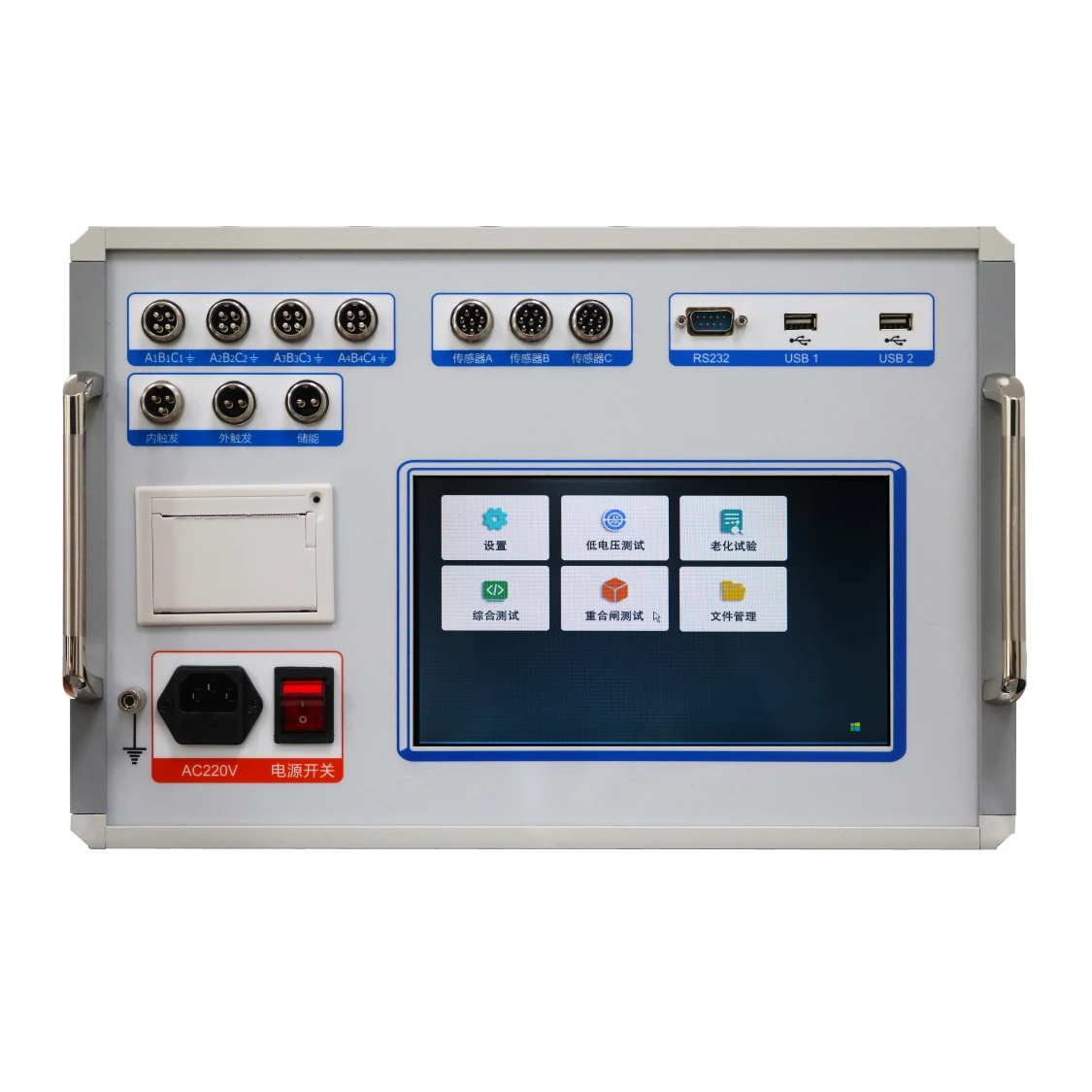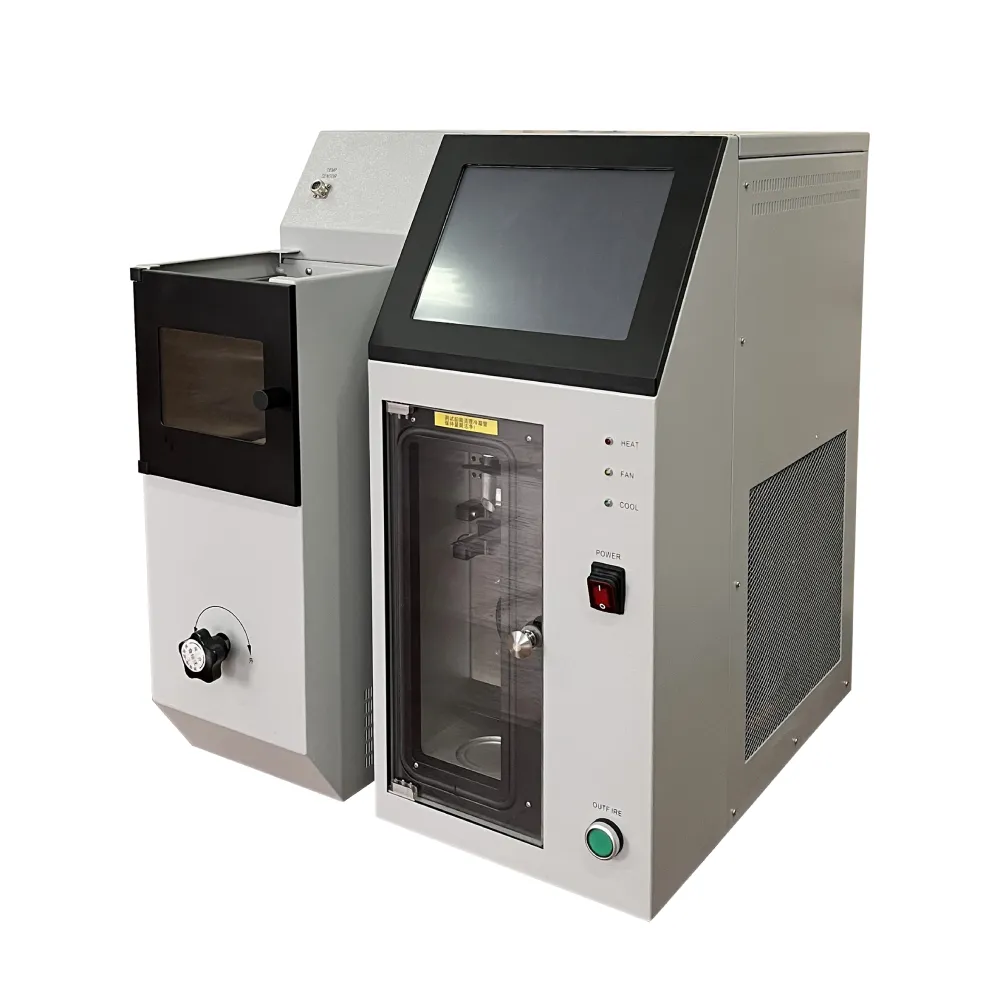TEL:
+86-0312-3189593
 English
English

Telephone:0312-3189593

Email:sales@oil-tester.com
2 月 . 16, 2025 10:42
Back to list
PS-CB101 High-Voltage Switch Mechanical Characteristic Tester Circuit Breaker Tester
Transformers are critical components in the electrical power distribution network, ensuring that voltage levels are appropriately adjusted for efficient power transmission and usage. To maintain their performance and reliability, various types of testing are imperative. These tests not only guarantee that transformers operate efficiently but also extend their lifespan by preventing potential failures. Comprehensive testing programs for transformers generally include the following key components
5. Field Testing Once a transformer is operational in the field, it is subject to various environmental conditions that could impact its performance. Field tests are performed under actual load conditions and include load tap changer (LTC) tests, thermographic inspections, and oil analysis. These tests are essential for identifying potential performance issues that could arise due to changing environmental factors or operational stresses. 6. Dielectric Breakdown Testing This test is pivotal for understanding the dielectric strength of transformer insulation materials. It involves applying a high voltage to the insulation material until it fails, helping to gauge the maximum voltage level that the material can withstand without failure. This test is essential for enhancing the safety and reliability of transformer operations. 7. Condition Assessment and Monitoring Modern transformers are often equipped with sensors and monitoring equipment that provide real-time data on various parameters such as temperature, oil level, and load. These systems are integral for condition-based maintenance, allowing operators to make informed decisions about the maintenance and operation of the transformer. By continuously monitoring these parameters, utilities can optimize the operational efficiency and longevity of transformers. By implementing a robust testing regimen, transformer operators can significantly reduce operational risks and improve the sustainable performance of their assets. Each type of test provides valuable data that can inform future maintenance strategies, optimize performance, and ensure compliance with safety standards. Moreover, reliable testing builds trust with stakeholders, demonstrating a commitment to maintaining high standards of operation and safety in the power distribution network. Through effective testing, the power industry can ensure that transformers continue to serve as reliable pillars of modern electrical infrastructure.


5. Field Testing Once a transformer is operational in the field, it is subject to various environmental conditions that could impact its performance. Field tests are performed under actual load conditions and include load tap changer (LTC) tests, thermographic inspections, and oil analysis. These tests are essential for identifying potential performance issues that could arise due to changing environmental factors or operational stresses. 6. Dielectric Breakdown Testing This test is pivotal for understanding the dielectric strength of transformer insulation materials. It involves applying a high voltage to the insulation material until it fails, helping to gauge the maximum voltage level that the material can withstand without failure. This test is essential for enhancing the safety and reliability of transformer operations. 7. Condition Assessment and Monitoring Modern transformers are often equipped with sensors and monitoring equipment that provide real-time data on various parameters such as temperature, oil level, and load. These systems are integral for condition-based maintenance, allowing operators to make informed decisions about the maintenance and operation of the transformer. By continuously monitoring these parameters, utilities can optimize the operational efficiency and longevity of transformers. By implementing a robust testing regimen, transformer operators can significantly reduce operational risks and improve the sustainable performance of their assets. Each type of test provides valuable data that can inform future maintenance strategies, optimize performance, and ensure compliance with safety standards. Moreover, reliable testing builds trust with stakeholders, demonstrating a commitment to maintaining high standards of operation and safety in the power distribution network. Through effective testing, the power industry can ensure that transformers continue to serve as reliable pillars of modern electrical infrastructure.
Latest news
-
Differences between open cup flash point tester and closed cup flash point testerNewsOct.31,2024
-
The Reliable Load Tap ChangerNewsOct.23,2024
-
The Essential Guide to Hipot TestersNewsOct.23,2024
-
The Digital Insulation TesterNewsOct.23,2024
-
The Best Earth Loop Impedance Tester for SaleNewsOct.23,2024
-
Tan Delta Tester--The Essential Tool for Electrical Insulation TestingNewsOct.23,2024





